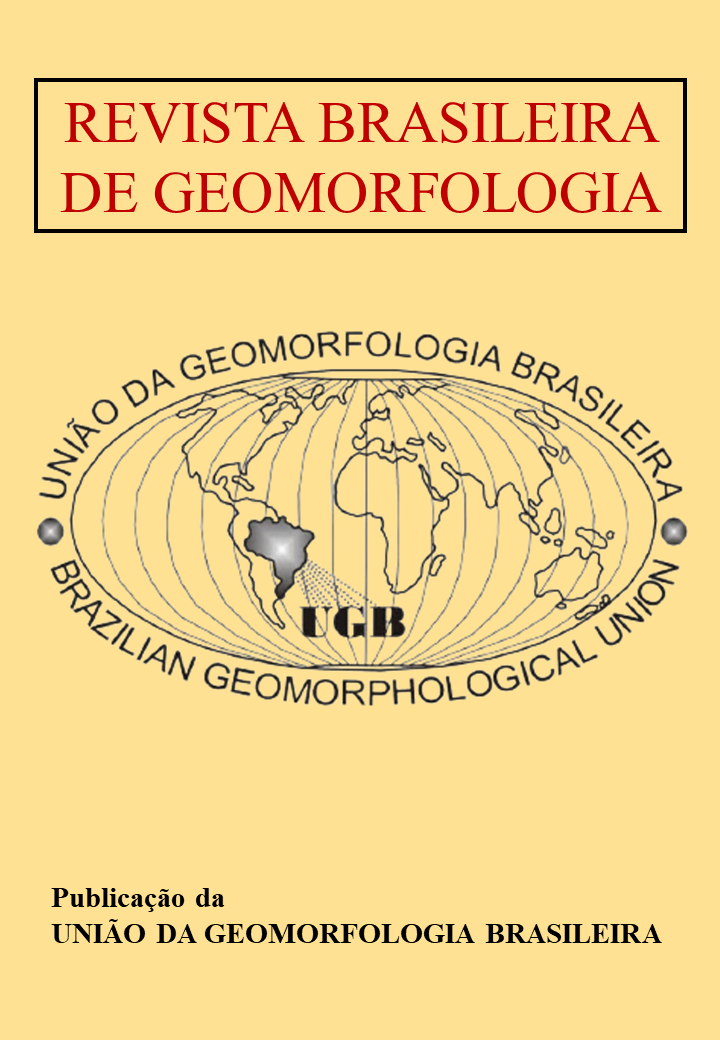Scanning Electron Microscopy (SEM) in the surficial cover analysis of the low fluvial-marine terraces in the southern coast of São Paulo state, Brazil
DOI:
https://doi.org/10.20502/rbg.v23i1.1959Palavras-chave:
Transgressões e Regressões, Pulsos Climáticos, Holoceno SuperiorResumo
The Ribeira de Iguape estuarine system in Southeastern Brazil has resulted from the complex interactions between
allogenic (climate, tectonics, and human interventions) and autogenic geomorphological processes. Early studies have shown
that the relationship between sedimentary balances, fluvial discharge, and Holocene climate pulses resulted in the coastline
displacement and low fluvial-marine terraces morphogenesis, which are composed of the marine and fluvial sedimentary
units. In this perspective, this study aimed to investigate whether the microtextural and morphological records on the quartz
grains associated with the different allostratigraphic units (marine and fluvial) correspond to the paleoenvironments
identified in previous studies. In this study we have used a combination of analyses (grain-size, microtextural, and absolute
dating) applied to the surficial cover sampled from two fluvial-marine terraces located on the right and left banks of the
Iguape river channel. The results show correspondences between paleoenvironments and microtextures found on the quartz
grains, confirming the statements addressed in previous studies that indicated the coastline was positioned about 9 km
inland around 3.5-2.7 ka.
Downloads
Downloads
Publicado
Como Citar
Edição
Seção
Licença
Autor(es) conservam os direitos de autor e concedem à revista o direito de primeira publicação, com o trabalho simultaneamente licenciado sob a Licença Creative Commons Attribution que permite a partilha do trabalho com reconhecimento da autoria e publicação inicial nesta revista.










